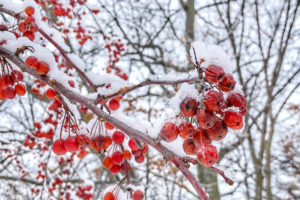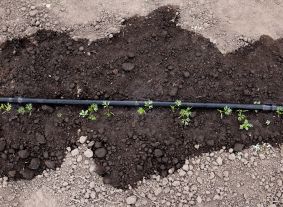Use A Garden Tunnel to Protect Plants from Cold Weather
Views: 5653

I’ve mentioned extending the growing season in both spring and fall with the use of cold frames. There’s another way to create a growing haven when temps are chilly. It’s called a garden tunnel.
Garden tunnels are the same concept as a greenhouse, but just a few feet tall. They are created using heavy-gauge wire bent into half circles and inserted into the ground every 4 to 5 feet. The wires are typically covered with a heavy plastic that is stretched over the structure and secured to the ground by covering the edges with soil.
No, you can’t walk into these mini greenhouses, but you can still care for what’s growing inside. Just lift the plastic for access to the section you need to water or tend.
How Garden Tunnels Work
Just like a greenhouse, a garden tunnel traps solar radiation. This warms not only the air inside the tunnel but also the soil.
With warmer soil, anything planted inside is much happier and more eager to grow. You’re likely not going to grow a small banana tree inside a garden tunnel in March, but lettuce, spinach, and other early spring greens can get a jump on growing nearly two weeks ahead of schedule.
Either sow seeds in the tunnel, where they will germinate faster with the warmer soil, or plant seedlings inside. Be sure the temperature isn’t too cold for the seedlings, and let the air and soil inside heat up a day or so before transplanting.
Spring and fall weather is unpredictable. One day may be frigid, the next unseasonably warm. And just like with a cold frame you’ll need to keep an eye on the temperatures inside the tunnel on cloudless sunny days, when the trapped solar radiation can really heat up inside.
Pros and Cons
Plants in tunnels can continue growing several weeks after temperatures dip down to the dangerous-for-plants level. Tunnels are great at protecting plants from wind damage, frost, and even snow.
But the tunnel can be a blessing and a curse. The secured plastic can keep pests out. A good thing. But it also can trap pests inside that might be emerging from underground. Keep an eye on this.
Most garden tunnels are simple enough to assemble yourself, and they’re mostly affordable. Go for the best plastic you can afford. You don’t want it ripping before your seeds germinate.
Meet Ellen Wells
When you’re raised on a farm, you can’t help but know a thing or two about gardening. Ellen Wells is our expert on edible gardening.…
Ellen's Recent Posts

Asparagus






